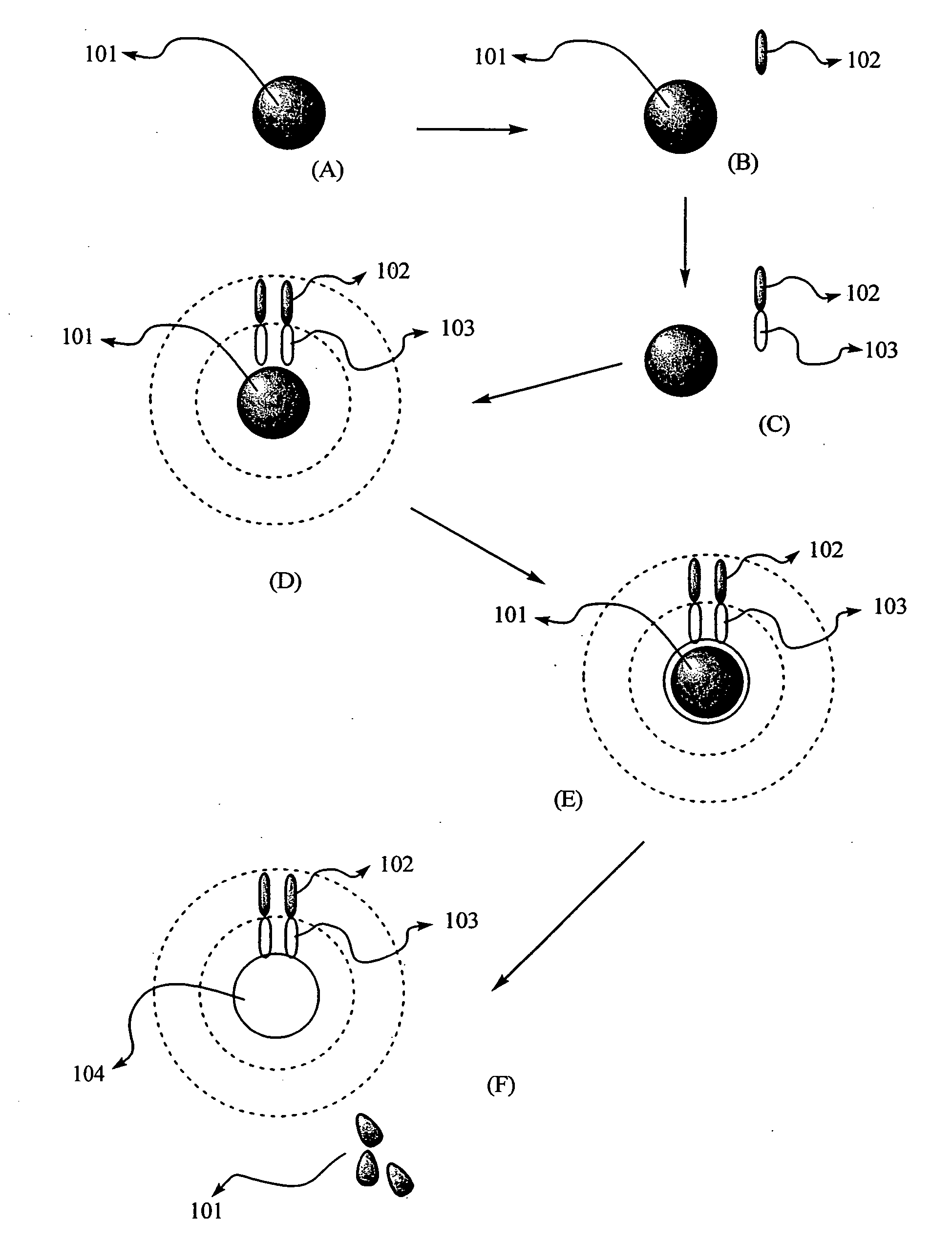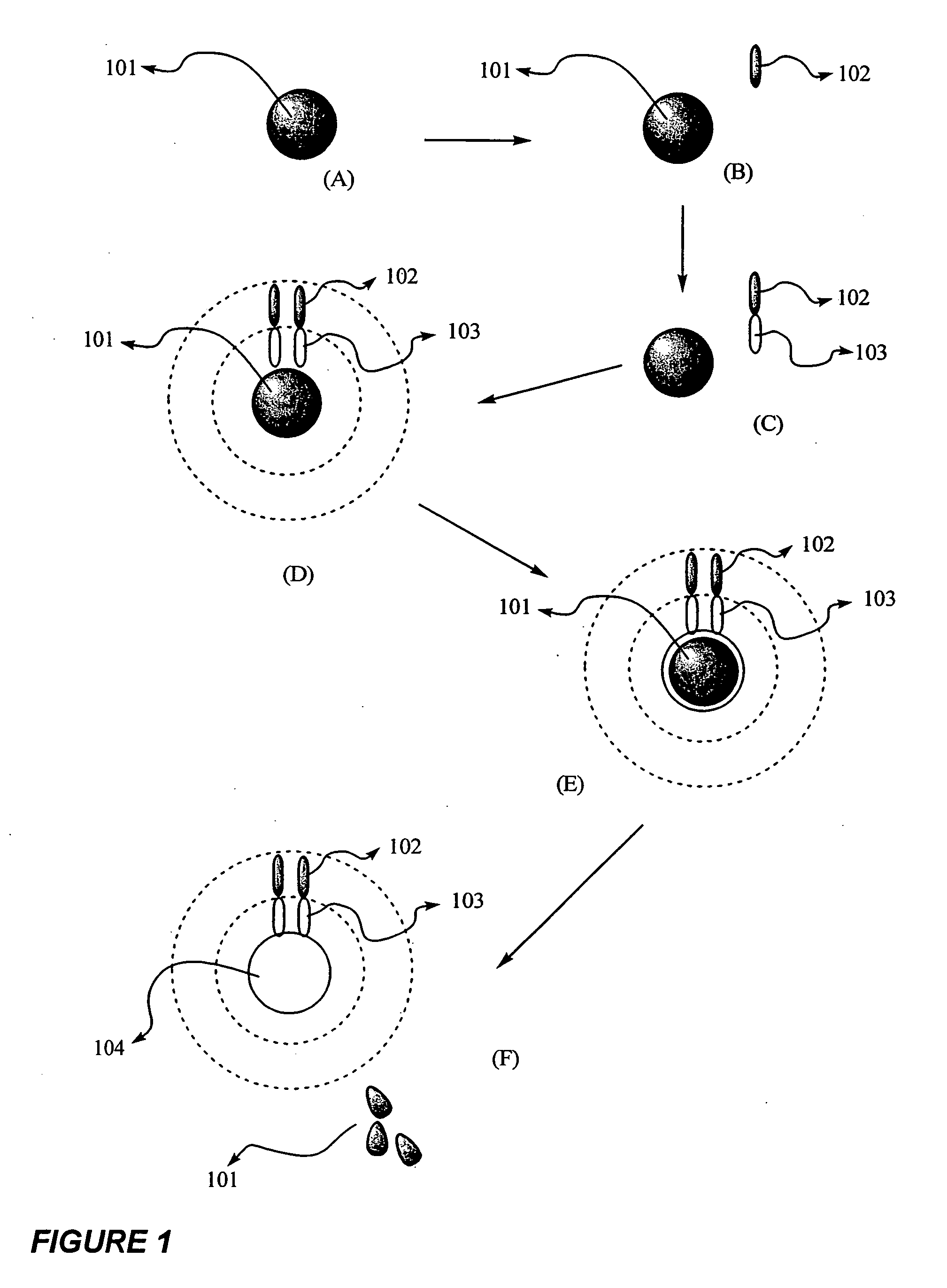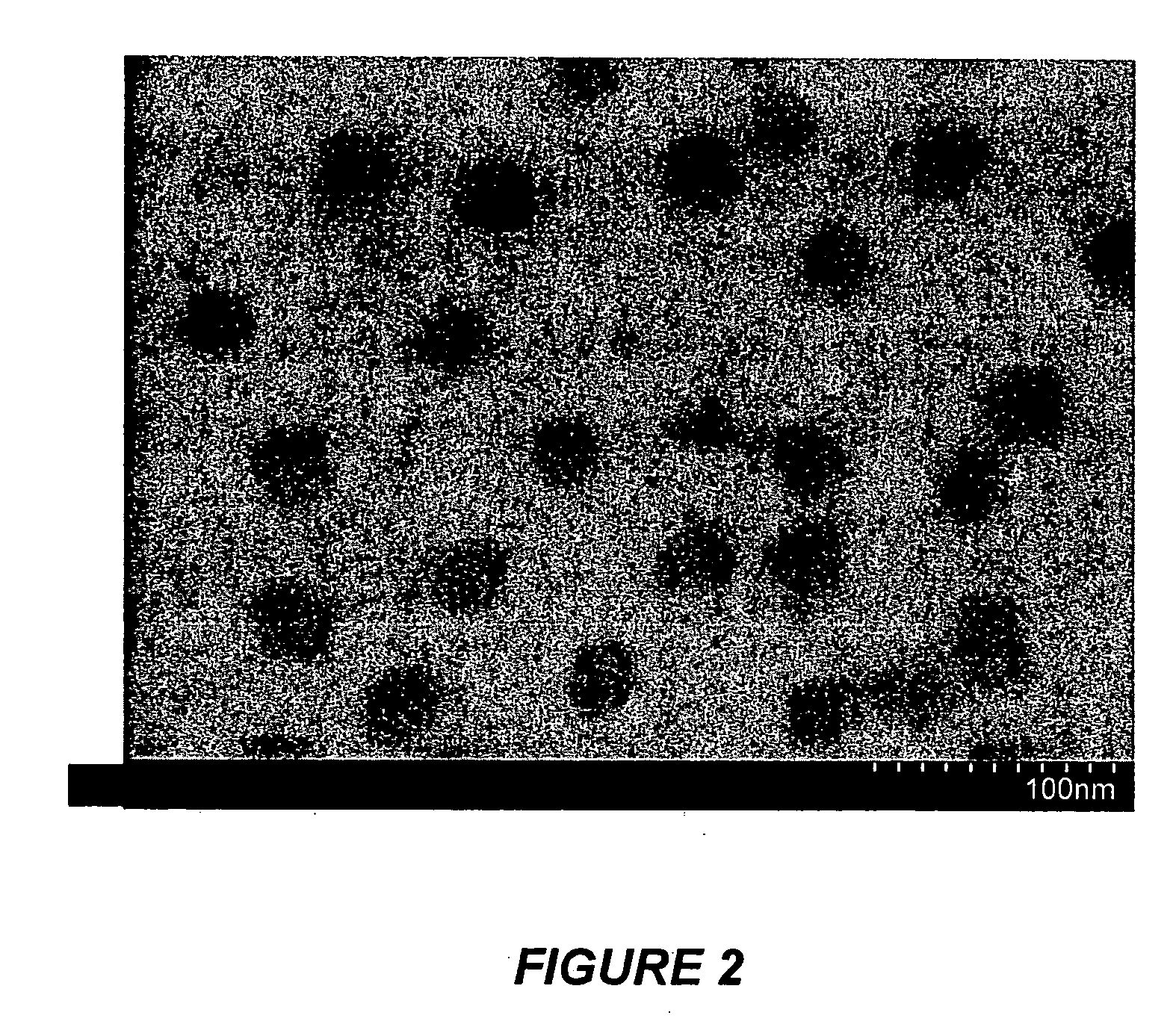Hollow nano-particles and method thereof
a nano-particle and nano-particle technology, applied in the field of hollow nano-particles, can solve problems such as the degradation of matrix rubber materials
- Summary
- Abstract
- Description
- Claims
- Application Information
AI Technical Summary
Benefits of technology
Problems solved by technology
Method used
Image
Examples
example 1
[0075]To a 32 oz. nitrogen purged bottle, 100 g of pure hexane, 77 g of styrene / hexane blend (32.8 wt % styrene), 0.2 ml of OOPS, and 1.0 ml of 1.54M butyl lithium were added. Then, the bottle was agitated in a water bath of 80° C. for 20 minutes. The resulting solution appeared to be red. After that, the bottle was charged with 0.1 ml nitrogen purged isopropanol to terminate the reaction. Since polystyrene is not soluble in hexane, the bottle was again placed in a 80° C. water bath in order to complete the termination. The resultant solution was milky. Then, 72 g of 1,4-butadiene / hexane blend (21.0 wt %) was added into the bottle. The reaction was reinitialized by adding 1 ml of 1.54M butyl lithium to the bottle. The solution turned a light yellow. After a 20-minute reaction, 55 g styrene / hexane blend (32.8 wt % styrene) was charged into the bottle. The solution turned a red color. After additional 20-minute reaction period, the bottle was allowed to cool down to 40° C. and then 8 ...
example 2
[0076]The procedure used in Example 1 was used except for some changes of materials charged. To a 32 oz. nitrogen purged bottle, 100 g of pure hexane, 84.2 g of styrene / hexane blend (32.8 wt % styrene), 0.1 ml of OOPS, and 0.5 ml of 1.54M butyl lithium were added. Then, the bottle was agitated in a water bath of 80° C. for 20 minutes. After that, the bottle was charged with 0.05 ml nitrogen purged isopropanol. The polystyrene was completely phased out from the solvent. Then, 71 g of 1,4-butadiene / hexane blend (21.0 wt %) were added into the bottle. The reaction was reinitialized with adding to the bottle 1 ml of 1.54M butyl lithium. After 20-minute reaction, 15 ml styrene / hexane blend (32.8 wt % styrene) was charged into the bottle. After additional 20-minute reaction, the solution appeared milk-like, the bottle was allowed to cool down to 40° C. and then 17 ml DVB was added into the bottle. The reaction was finally terminated with isopropanol and the material protected with adding ...
example 3
[0077]The procedure used in Example 2 was used here except for some changes of materials charged. To a 32 oz. nitrogen purged bottle, 95 g of pure hexane, 87 g of styrene / hexane blend (32.8 wt % styrene), 0.2 ml of OOPS, and 1.0 ml of 1.54M butyl lithium were added. Then, the bottle was agitated in a water bath of 80° C. for 1 hour. After that, the bottle was charged with 0.1 ml nitrogen purged isopropanol. The bottle was agitated in the 80° C. water bath for another 2 hours. Then, 74 g of 1,4-butadiene / hexane blend (21.0 wt %) were added into the bottle. The reaction was re-initialized with adding the bottle 1 ml of 1.54M butyl lithium. After 30-minute reaction, 15 ml styrene / hexane blend (32.8 wt % styrene) was charged into the bottle. After an additional 30-minute reaction, the solution appeared milk-like, the bottle was allowed to cool down to 40° C., and then 25 ml DVB was added into the bottle. The reaction took place for 2 hours and finally terminated with isopropanol. The ma...
PUM
| Property | Measurement | Unit |
|---|---|---|
| size | aaaaa | aaaaa |
| dispersity | aaaaa | aaaaa |
| size | aaaaa | aaaaa |
Abstract
Description
Claims
Application Information
 Login to View More
Login to View More - R&D
- Intellectual Property
- Life Sciences
- Materials
- Tech Scout
- Unparalleled Data Quality
- Higher Quality Content
- 60% Fewer Hallucinations
Browse by: Latest US Patents, China's latest patents, Technical Efficacy Thesaurus, Application Domain, Technology Topic, Popular Technical Reports.
© 2025 PatSnap. All rights reserved.Legal|Privacy policy|Modern Slavery Act Transparency Statement|Sitemap|About US| Contact US: help@patsnap.com



